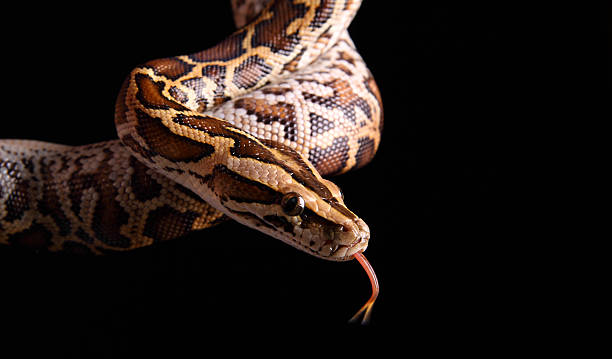Burmese Python Classification and Evolution
The Burmese Python, scientifically known as Python bivittatus, belongs to the Pythonidae family of snakes. They are one of the largest snake species in the world, with an average length of 12 to 18 feet and can weigh up to 200 pounds. The Burmese Python's ancestors date back to the prehistoric era, making them a very ancient species.
Burmese Python Anatomy and Appearance
The Burmese Python has a muscular, elongated body covered in scales that come in various colors, including light brown, dark brown, and green. They have a distinct pattern of irregular blotches running down their back. The Burmese Python has a triangular-shaped head and sharp, curved teeth that they use for grasping prey.
Burmese Python Distribution and Habitat
Burmese Pythons are native to Southeast Asia, specifically found in countries like Thailand, Myanmar, and Vietnam. They inhabit a variety of environments, including forests, grasslands, swamps, and even farmland. In recent years, Burmese Pythons have become an invasive species in areas such as Florida, where they have been introduced to the environment.
Burmese Python Behaviour and Lifestyle
Burmese Pythons are primarily nocturnal and solitary animals. They are ambush predators and spend a considerable amount of time waiting for prey to come to them. They are excellent swimmers and climbers, allowing them to access prey in a variety of environments. Burmese Pythons are known for their docile behavior and are sometimes kept as pets, although this practice is not recommended due to their size and potential danger.
Burmese Python Reproduction and Life Cycles
Burmese Pythons reach sexual maturity at around four years of age and mate during the winter months. The female Burmese Python lays an average of 30 to 50 eggs and will incubate them for approximately 60 days. After hatching, the young Burmese Pythons are completely independent and will hunt for themselves from the start.
Burmese Python Diet and Prey
Burmese Pythons are carnivorous and will eat a variety of prey, including small mammals, birds, and reptiles. They are capable of consuming prey larger than themselves, and their jaws are flexible, allowing them to swallow prey whole. In their native habitats, they have been known to feed on larger animals, including deer and alligators.
Conclusion
In conclusion, the Burmese Python is an ancient and fascinating species that has adapted to a variety of environments and prey. They have become an invasive species in some areas, which can be harmful to the ecosystem. It is essential to understand their behavior and habitat to ensure their protection and the safety of those who live in their environment.




.webp)

.webp)
.webp)
.webp)
.webp)
Comments
Post a Comment